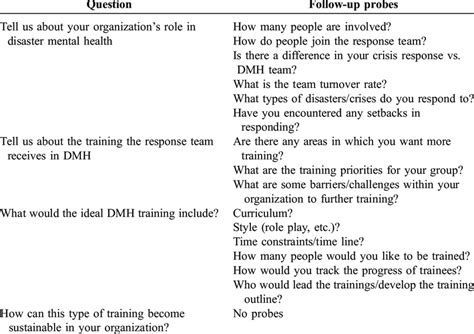Unveiling Semi-Structured Interviews: Insights & Tips

Semi-structured interviews are a popular research method used by social scientists to gather data from participants. Unlike structured interviews, which follow a predetermined set of questions, semi-structured interviews allow for more flexibility and open-ended responses. If you’re planning to conduct a semi-structured interview, here are some insights and tips to help you get the most out of your research.
1. Understand the Purpose
Before conducting a semi-structured interview, it’s important to understand the purpose of your research. What do you hope to achieve by conducting the interviews? Is there a particular research question you’re trying to answer? Having a clear understanding of your objectives will help you design your interview questions and analyze your data effectively.
2. Develop a Framework
Although semi-structured interviews allow for flexibility, it’s still important to develop a framework for your interviews. This might include a list of key topics or questions you want to cover, as well as any follow-up questions or prompts you might use. Having a framework will help ensure that you cover all the necessary topics while still allowing for open-ended responses.
3. Choose Your Participants Carefully
The success of your semi-structured interviews depends largely on the quality of your participants. Be sure to choose participants who are knowledgeable about the topic you’re investigating and who can provide valuable insights. Consider using purposive sampling to ensure that you’re selecting participants who can provide diverse perspectives on your research question.
4. Build Rapport
Building rapport with your participants is essential for ensuring that they feel comfortable sharing their thoughts and experiences. Take time to introduce yourself and explain the purpose of your research. Consider using icebreaker questions or small talk to help put participants at ease.
5. Ask Open-Ended Questions
One of the key benefits of semi-structured interviews is that they allow for open-ended responses. Avoid asking closed-ended questions that can be answered with a simple “yes” or “no.” Instead, ask open-ended questions that encourage participants to share their thoughts and experiences in their own words.
6. Listen Attentively
Active listening is an important skill for any interviewer. Pay close attention to your participants’ responses and ask follow-up questions to clarify any points that are unclear. Avoid interrupting or talking over your participants, and be sure to show empathy and respect for their perspectives.
7. Take Good Notes
Since semi-structured interviews are often recorded, it can be easy to rely on the recording as your primary source of data. However, taking good notes during the interview can be invaluable for helping you remember key points and analyze your data effectively. Consider using shorthand or abbreviations to help you take notes quickly.
8. Analyze Your Data Carefully
Once you’ve conducted your interviews, it’s time to analyze your data. Consider using a thematic analysis approach to identify key themes and patterns in your data. Be sure to code your data carefully and double-check your analysis to ensure accuracy.
9. Use Quotes and Examples
Using quotes and examples from your participants can help bring your research to life and provide valuable insights for your readers. Be sure to use quotes and examples that are representative of your overall findings and avoid cherry-picking individual responses that might not be representative of your data as a whole.
10. Draw Conclusions
Once you’ve analyzed your data, it’s time to draw conclusions based on your findings. Consider how your findings relate to your research question and any previous research on the topic. Be sure to acknowledge any limitations of your study and suggest directions for future research.
Conclusion
Semi-structured interviews can be a valuable research method for gathering rich, detailed data from participants. By following these tips and insights, you can ensure that your interviews are conducted effectively and that you’re able to analyze your data with confidence.
FAQs
What are the benefits of semi-structured interviews?
Semi-structured interviews allow for flexibility and open-ended responses, which can provide valuable insights into participants’ thoughts and experiences. They can also be used to gather rich, detailed data that might not be possible to collect through other research methods.
How do I choose participants for my semi-structured interviews?
Consider using purposive sampling to select participants who can provide diverse perspectives on your research question. Choose participants who are knowledgeable about the topic you’re investigating and who can provide valuable insights.
What are some common pitfalls to avoid when conducting semi-structured interviews?
Common pitfalls include asking leading questions, failing to build rapport with participants, and relying too heavily on recorded data rather than taking good notes. It’s also important to avoid cherry-picking individual responses that might not be representative of your overall findings.
How do I analyze my data from semi-structured interviews?
Consider using a thematic analysis approach to identify key themes and patterns in your data. Be sure to code your data carefully and double-check your analysis to ensure accuracy. It’s also important to draw conclusions based on your findings and consider how they relate to your research question and previous research on the topic.
